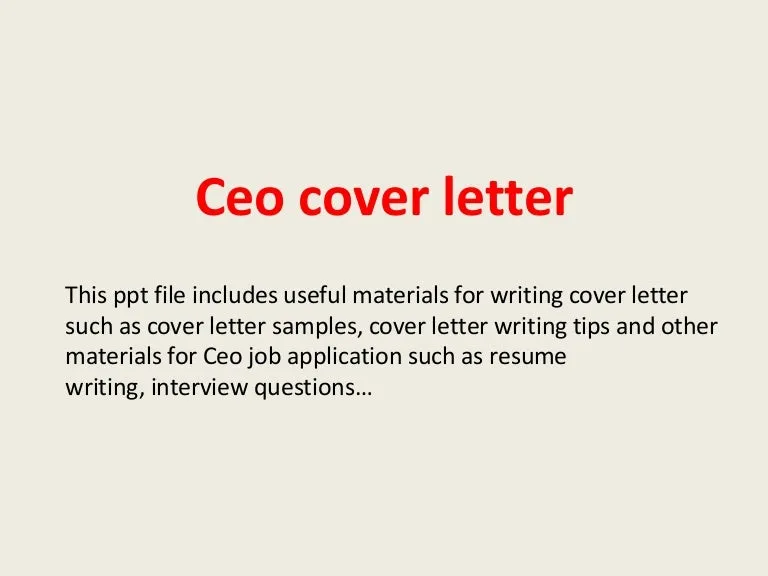Cover Letter for CEO The Ultimate Guide
Landing a CEO position is the pinnacle of many executive careers. The application process demands not only a stellar resume but also a meticulously crafted cover letter. This guide provides an ultimate roadmap to writing a cover letter for CEO roles that will capture attention, showcase your leadership capabilities, and ultimately, secure you an interview. Writing a compelling cover letter is a crucial step in the job application process. It serves as your personal introduction and provides an opportunity to make a strong first impression. Unlike a resume, which is a factual summary, a cover letter allows you to express your personality, passion, and specific reasons for applying.
Understanding the CEO Cover Letter
A CEO cover letter differs significantly from those written for other positions. It needs to demonstrate a deep understanding of business strategy, leadership, and the specific challenges and opportunities facing the company. It’s not just about listing accomplishments; it’s about articulating a vision and demonstrating how you can drive growth and success. The cover letter must showcase your strategic thinking, ability to make impactful decisions, and your proven leadership abilities. Moreover, it is vital to demonstrate your understanding of the company’s current situation and to articulate a clear plan for addressing any challenges or capitalizing on opportunities.
Why a Great Cover Letter Matters
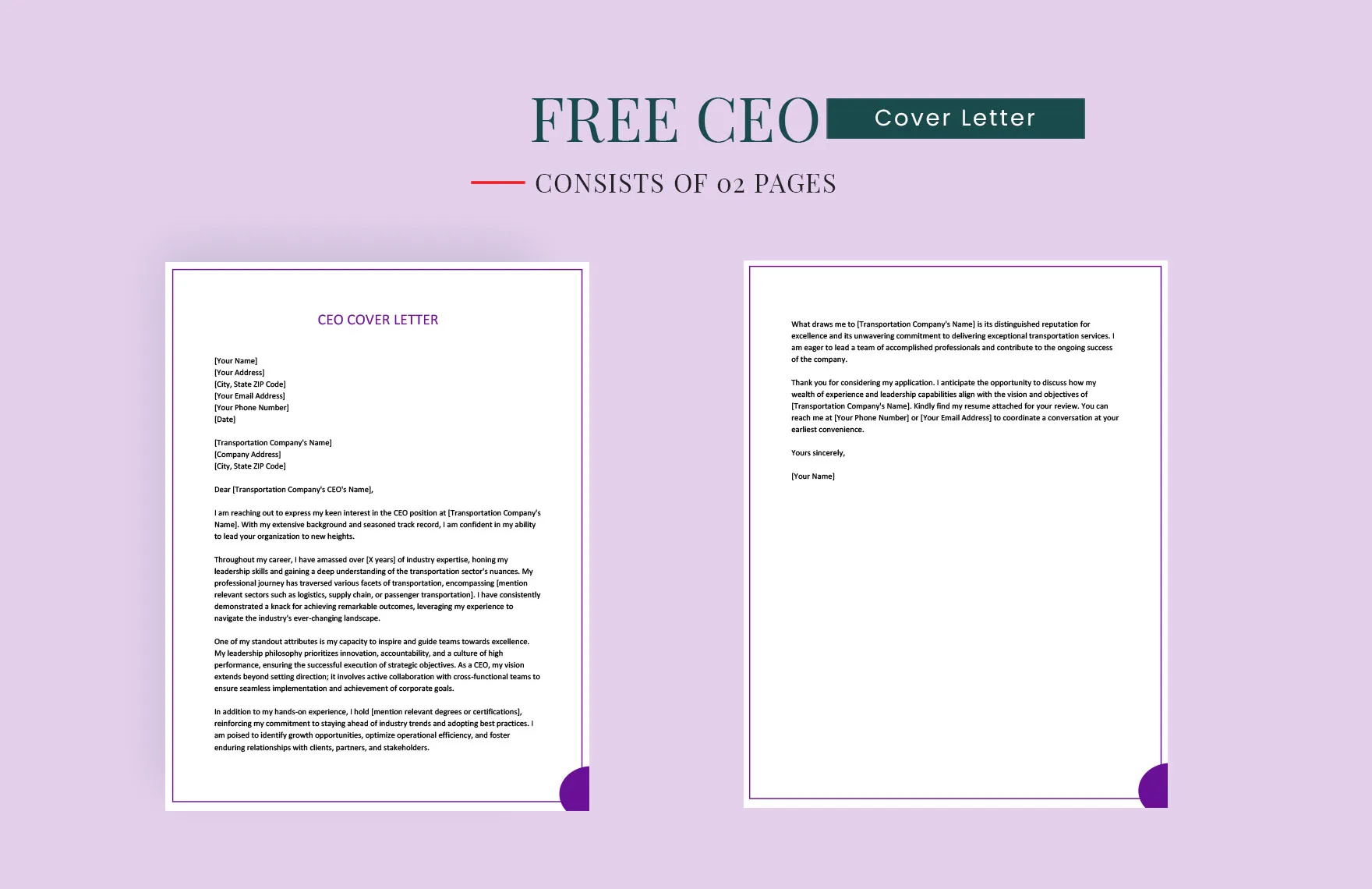
A well-written cover letter is not merely a formality; it’s your chance to stand out from the competition. It shows that you’ve taken the time to understand the company and its needs. It’s an opportunity to inject your personality and showcase your ability to communicate effectively. The cover letter is the first impression, setting the tone for the rest of the application. A compelling cover letter is your chance to connect with the hiring manager on a personal level. This can be the deciding factor when competing against other candidates with similar qualifications. It adds a layer of context and passion that a resume alone cannot convey.
Key Components of a Cover Letter
A strong CEO cover letter consists of several key components that work together to create a cohesive narrative. These components should be carefully constructed to highlight your strengths and align with the specific requirements of the role. Structuring your letter correctly is crucial, so use clear headings and formatting to guide the reader. Remember that the cover letter is a reflection of your professionalism, strategic thinking, and attention to detail. Make it easy for the reader to absorb your key points quickly.
Crafting a Powerful Opening
The opening of your CEO cover letter is crucial as it sets the tone for the entire document. It needs to be impactful, grabbing the reader’s attention immediately and clearly stating your purpose. Avoid generic openings and instead use a compelling statement that demonstrates your understanding of the company and the position. The most effective openings are concise and demonstrate a genuine interest in the company. Tailor the opening to the specific role and the company’s needs.
Grabbing Attention Immediately
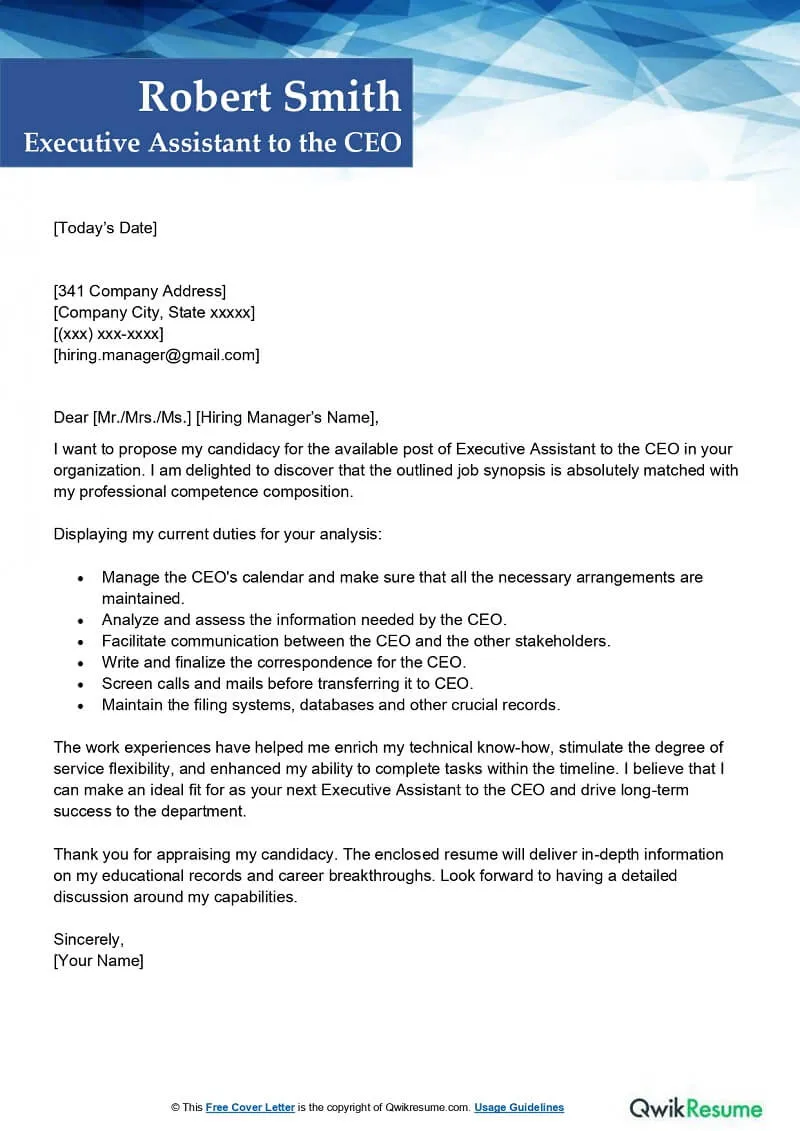
To capture the reader’s attention, start with a concise and engaging statement. Avoid generic phrases like “I am writing to apply.” Instead, consider highlighting a specific achievement or your vision for the company. Demonstrate that you have researched the company and understand its current challenges or opportunities. This shows that you are genuinely interested in the role and have the strategic thinking to make an immediate impact. Use a strong opening that showcases your understanding and passion for the company.
Highlighting Relevant Experience
The core of your CEO cover letter should highlight your relevant experience, tailored to the specific needs of the role. Focus on the experiences that demonstrate your ability to lead, strategize, and deliver results. Provide specific examples that showcase your achievements in past leadership roles. This section should clearly outline your proven track record of success. Focus on the tangible outcomes you have achieved in previous roles. Make sure that your experience aligns with the company’s values and objectives.
Showcasing Achievements & Results
Focus on showcasing your key achievements and quantifiable results. Use data and metrics to illustrate the impact of your work. The best cover letters demonstrate your ability to drive positive change, increase revenue, or improve efficiency. Provide detailed examples of how you have improved operational efficiency, increased market share, or reduced costs in previous roles. Use metrics to demonstrate your value, illustrating how your actions have directly contributed to the company’s success. This section should be filled with concrete examples that demonstrate your expertise and impact.
Quantifying Your Successes
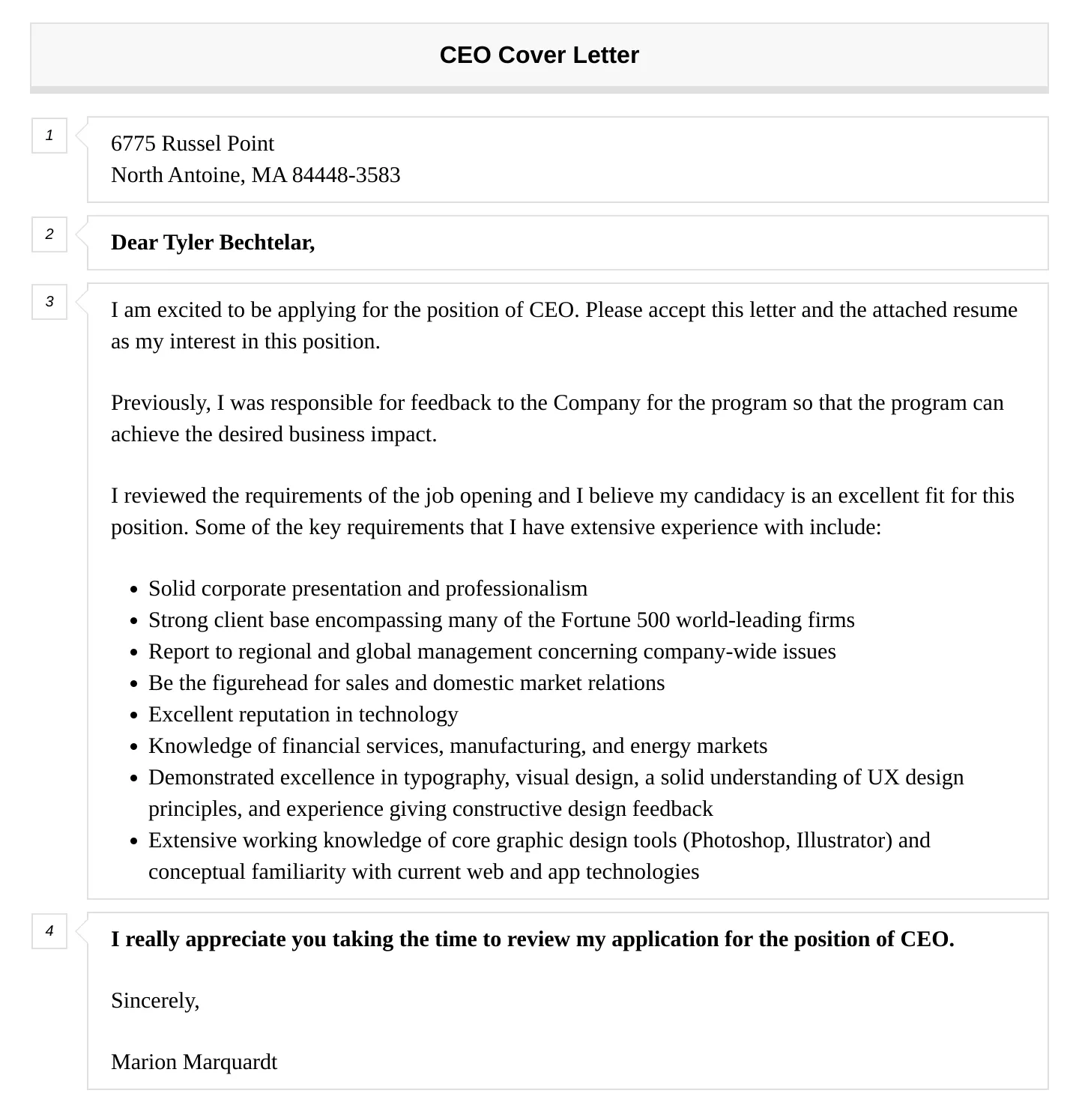
Quantifying your successes is crucial for demonstrating the tangible value you bring. Instead of saying you “increased sales,” state the percentage increase or the total revenue generated. Use metrics to measure your impact, providing concrete numbers that reflect your achievements. This not only adds credibility but also helps the reader understand the scope of your accomplishments. The more specific you are with your achievements, the more persuasive your cover letter becomes. Use numbers, percentages, and specific data points to quantify your results effectively.
Demonstrating Leadership & Skills
Highlight your leadership skills and management abilities, including your ability to inspire, motivate, and direct teams. Showcase your strategic thinking, problem-solving capabilities, and decision-making skills. Demonstrate that you possess a strong understanding of business operations, financial management, and market analysis. These skills are essential for a CEO, so clearly illustrate your proficiency in each area. Make sure to provide examples of your abilities in action.
Aligning with the Company Vision
Demonstrate how your vision aligns with the company’s goals and objectives. Show that you have researched the company and understand its mission, values, and strategic direction. Articulate your understanding of the company’s current challenges and how you plan to address them. Demonstrate your understanding of the industry trends and the company’s position within the market. Clearly articulate how your vision and strategies will contribute to the company’s continued success.
Showcasing Problem-Solving Abilities
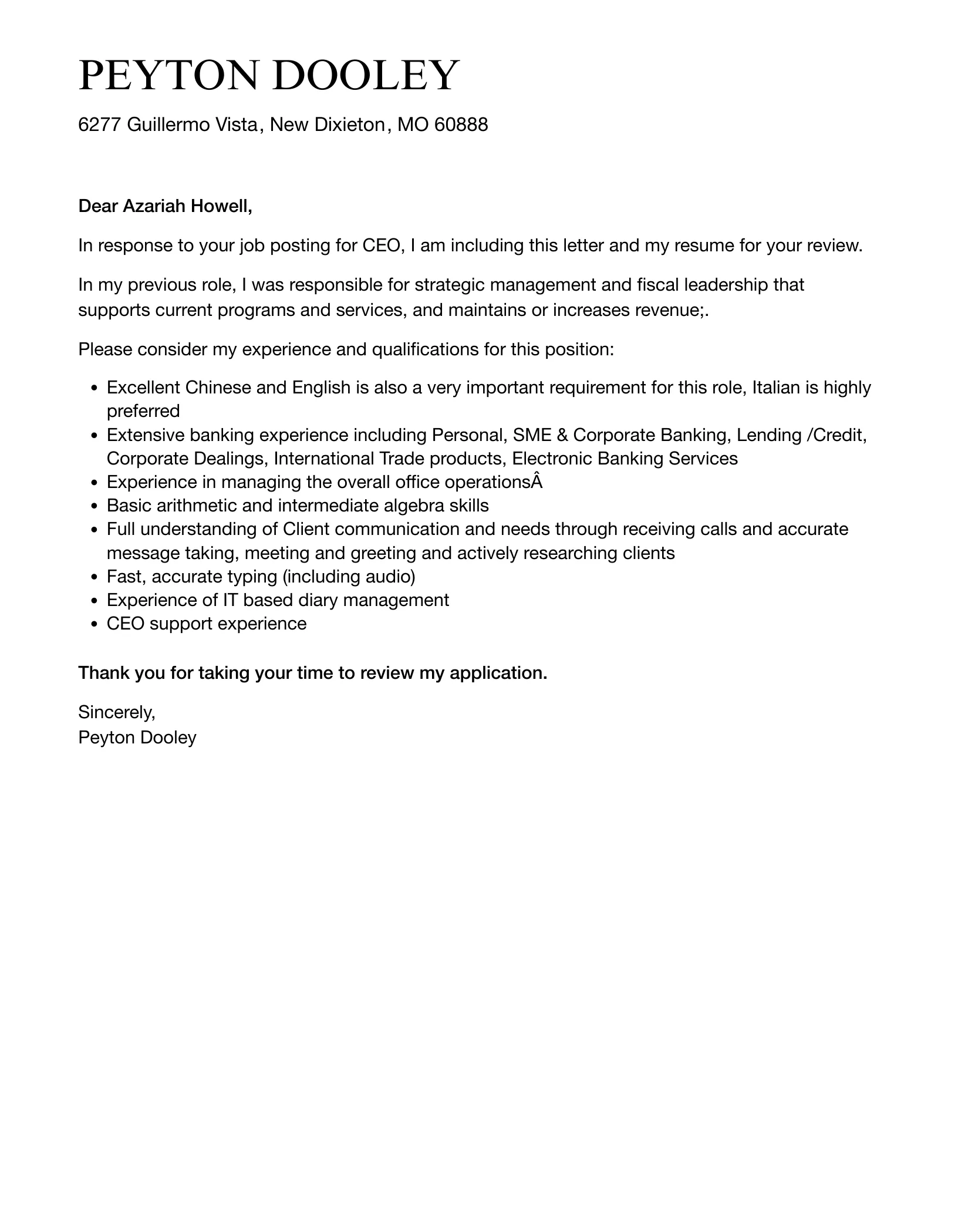
A crucial aspect of any CEO’s role is the ability to solve complex problems. Highlight instances where you have successfully identified and resolved significant challenges. Describe your approach to problem-solving, including the strategies you employed and the positive outcomes achieved. The best cover letters showcase your ability to think critically, analyze situations, and implement effective solutions. Provide specific examples of your problem-solving abilities and the results they produced. This demonstrates your value as a leader.
Writing a Compelling Closing
The closing of your cover letter is your final opportunity to make an impression. It should be strong, enthusiastic, and encourage the reader to take the next step. Avoid generic closing phrases. Instead, create a call to action that encourages the reader to reach out. The conclusion should be a reflection of your enthusiasm for the role and the company. Your closing statement should provide a memorable finish.
Expressing Enthusiasm & Call to Action
Conclude your letter by expressing your enthusiasm for the role and reiterating your interest in the company. Include a clear and concise call to action. This may include inviting the reader to contact you to schedule an interview. Make your call to action specific, such as “I am eager to discuss how my experience can help [Company Name] achieve its goals.” Ensure your closing is polished and professional. Demonstrate your excitement about the opportunity to discuss your qualifications.
Proofreading & Formatting Your Letter
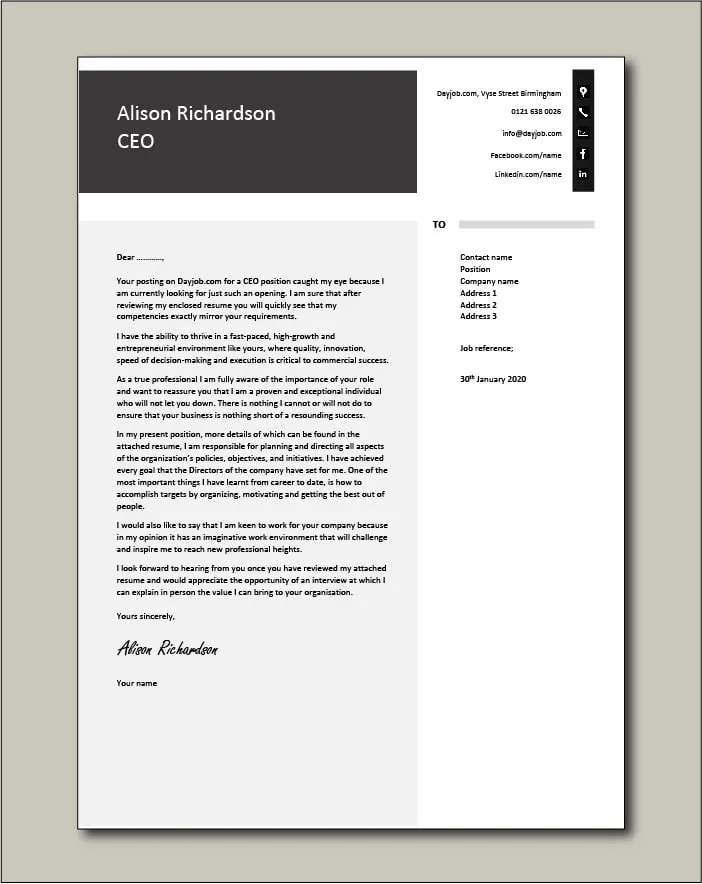
Before submitting your CEO cover letter, ensure it is impeccably proofread and formatted. Errors in spelling, grammar, or formatting can undermine your credibility. Take the time to meticulously review your letter. Ask someone else to proofread it for you. Pay close attention to every detail to guarantee a polished, professional presentation. The best cover letters are free from errors and formatted for easy reading.
Ensuring Professionalism & Clarity
Maintain a professional tone and clarity in your writing throughout your cover letter. Use formal language, avoid slang, and keep your sentences concise. Your cover letter should be easy to understand, highlighting your key qualifications and experiences. Ensure that the content is well-organized and logically structured. Write with precision and clarity to convey a professional image.
Formatting for Readability
Proper formatting enhances the readability of your cover letter. Use a professional font, such as Times New Roman or Arial. Maintain consistent spacing and margins. Break up large blocks of text with bullet points and headings. Ensure your cover letter is easy to read on any device. Proper formatting is critical to making your letter easy to navigate.
Tips for Specific Industries & Roles
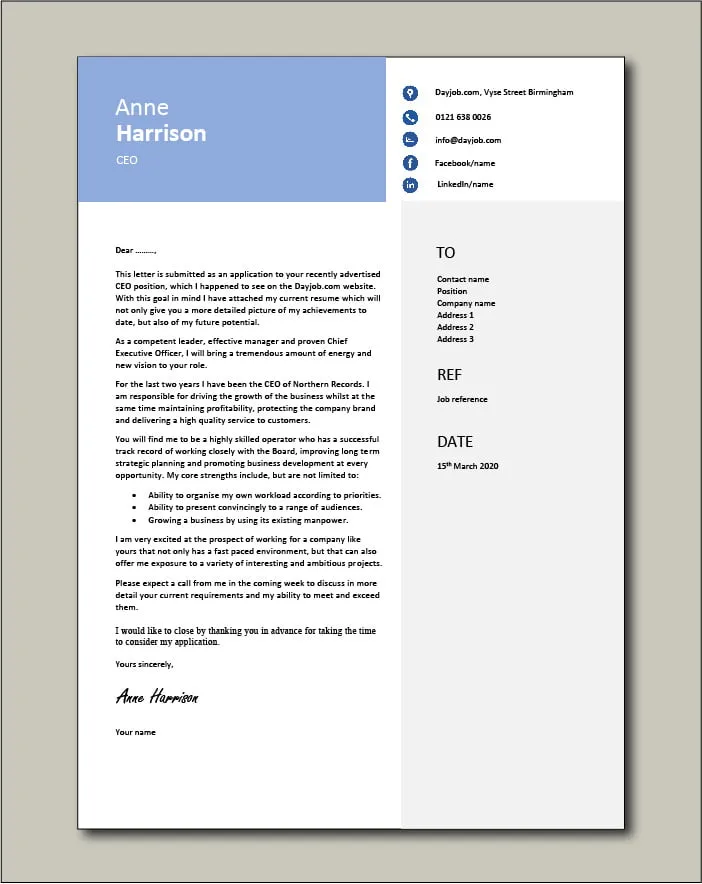
Tailoring your cover letter to the specific industry and the type of CEO role you are pursuing is important. This shows that you understand the unique challenges and requirements of the industry. Consider the industry standards and the particular expectations of the company. A one-size-fits-all cover letter will not suffice. By tailoring the letter to each opportunity, you can demonstrate your deep understanding and suitability for the role.
Cover Letter for a Startup CEO
For a startup CEO role, emphasize your experience in building, scaling, and driving rapid growth. Showcase your entrepreneurial spirit, your ability to take risks, and your passion for innovation. Highlight any fundraising experience, your network, and your adaptability to a fast-paced environment. Demonstrate your experience with resourcefulness, agility, and innovation. Show your ability to thrive in a dynamic setting.
Cover Letter for a Large Corporation CEO
If you are applying for a CEO role in a large corporation, focus on your experience in managing complex organizations and driving significant growth. Showcase your ability to navigate corporate politics, manage large teams, and deliver consistent results. Highlight your experience in strategic planning, risk management, and financial oversight. Emphasize your ability to manage large budgets and complex operations.
Common Mistakes to Avoid
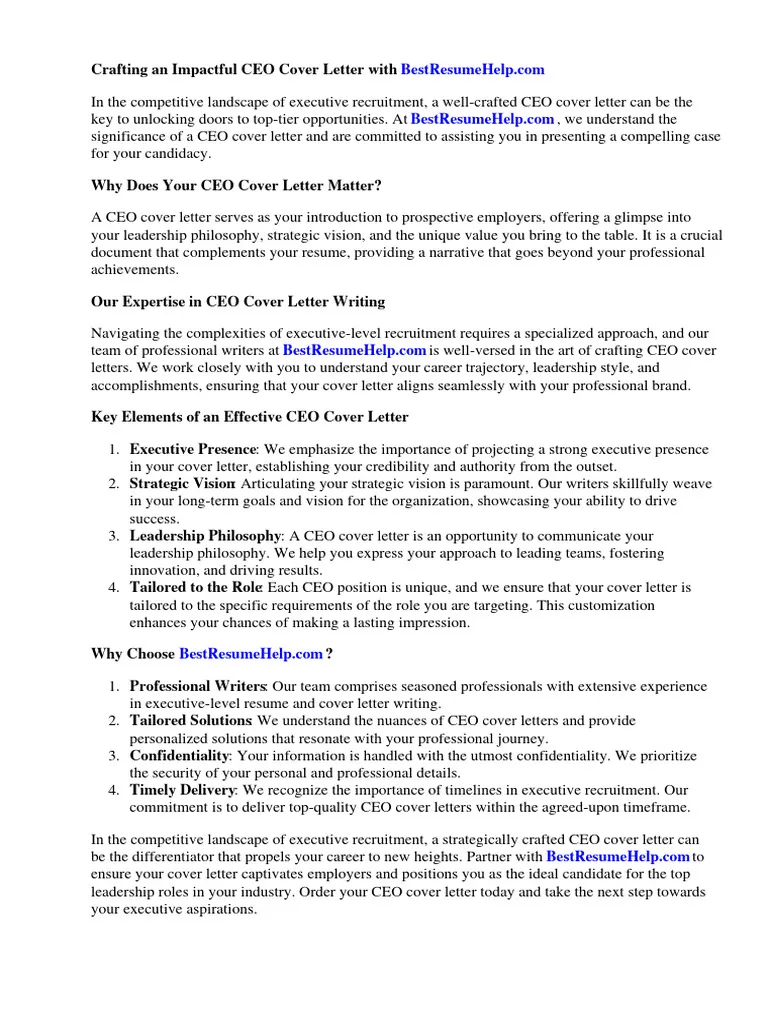
Certain mistakes can significantly detract from the effectiveness of your CEO cover letter. Avoiding these pitfalls is crucial to making a positive impression. Be mindful of what can damage your credibility. Ensure you address the common pitfalls, focusing on a well-crafted, effective, and persuasive cover letter.
Generic Letters & Lack of Research
One of the most common mistakes is sending a generic cover letter that is not tailored to the specific company or role. Failing to conduct thorough research shows a lack of interest and preparation. Your cover letter should clearly demonstrate that you have taken the time to research the company’s mission, values, and recent activities. Generic letters are often ignored. Demonstrate your understanding of the company.
Focusing on Yourself Too Much
While it is important to highlight your skills and achievements, avoid making the cover letter solely about yourself. The best cover letters focus on the value you can bring to the company and how you can contribute to its success. Instead of dwelling on personal achievements, focus on how your experience aligns with the company’s needs and goals. Focus on what you can do for the company, not just what the company can do for you.
Ignoring the Company’s Needs
Failing to address the company’s needs is a critical error. The cover letter should demonstrate your understanding of the company’s challenges and how you plan to address them. Show that you have considered the company’s strategic priorities and how your skills can contribute to their goals. Ignore the company’s needs at your peril. Address specific challenges the company faces. Demonstrate how your skills and experience make you the ideal candidate to solve those problems.
